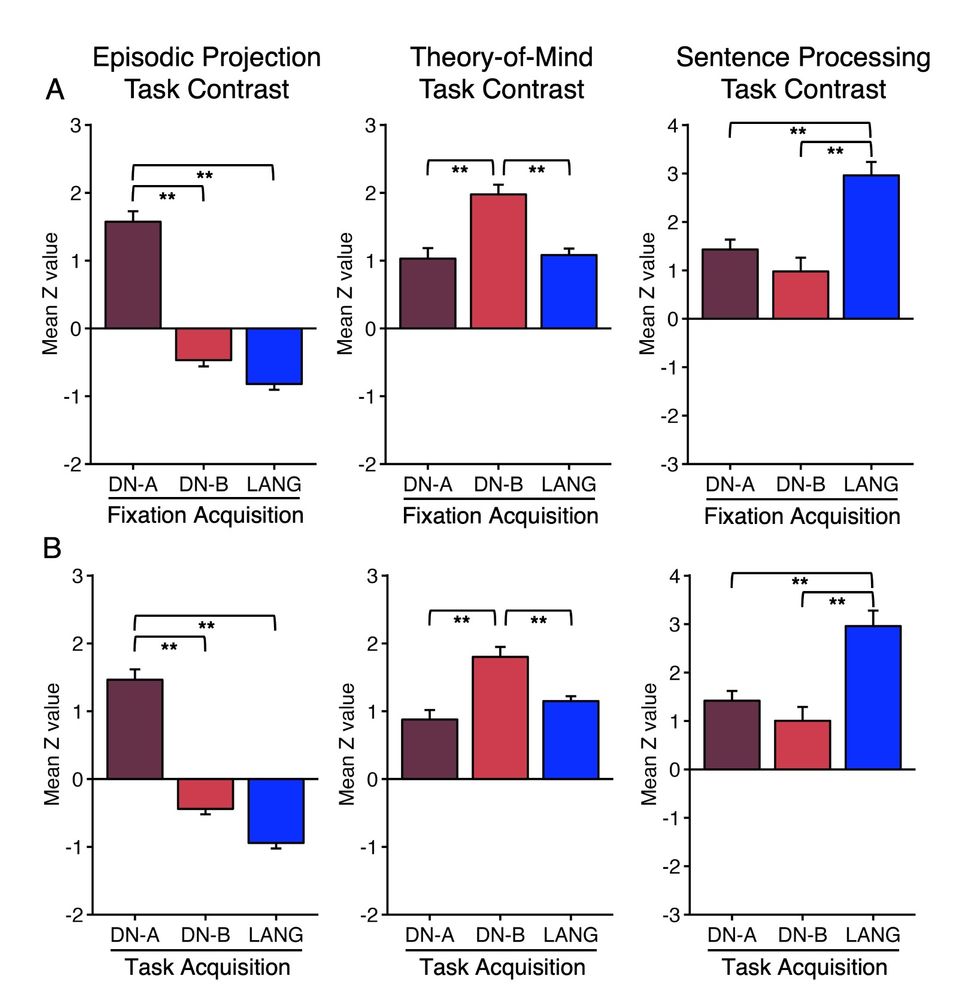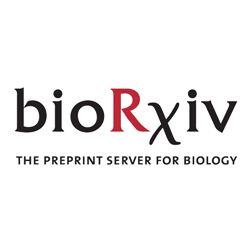Thrilled to team up with @caterinagratton.bsky.social @ariellekeller.bsky.social and Chuck Lynch for a symposium at CNS 2026! Please consider voting for our session!
30.09.2025 15:11 — 👍 2 🔁 1 💬 0 📌 0

My lab at USC is recruiting!
1) research coordinator: perfect for a recent graduate looking for research experience before applying to PhD programs: usccareers.usc.edu REQ20167829
2) PhD students: see FAQs on lab website dornsife.usc.edu/hklab/faq/
28.09.2025 21:46 — 👍 27 🔁 18 💬 1 📌 1
⬇️ Check out this great paper by Jingnan Du et al. It shows you can use fMRI task data to estimate networks as reliably as with rest data! A game changer to increase statistical power in regions with low SNR and leverage datasets that may only have task data.
29.09.2025 14:12 — 👍 1 🔁 1 💬 0 📌 0
Amazing work led by Jingnan! Pooling in task and rest data can give us a lot of discovery potential like discovering hard to find networks in the thalamus (bulk of my postdoc work with Randy). Task data can be used to define networks and activations from left out runs can be investigated. Cool work!
26.09.2025 15:48 — 👍 4 🔁 2 💬 0 📌 0
Thank you, Rocco!
26.09.2025 18:36 — 👍 0 🔁 0 💬 0 📌 0
Looking forward, future data collections might consider acquiring only task data and using that data to both estimate networks and also to quantify the evoked task response from regions within those networks. (13/13)
26.09.2025 15:24 — 👍 0 🔁 0 💬 0 📌 0
Overall, our findings suggest that there is an underlying, stable network architecture that is unique to the individual and persists across task states. For existing datasets with both task and resting-state data, power can be increased by combining all available data. (12/13)
26.09.2025 15:24 — 👍 1 🔁 0 💬 1 📌 0
A single MRI session of ∼1 h in length can thus be used both to estimate precision brain networks and quantify meaningful task responses. This strategy is particularly useful in translational studies seeking to minimize patient burden. (11/13)
26.09.2025 15:24 — 👍 0 🔁 0 💬 1 📌 0

To demonstrate this, we obtained both networks and network-level task response in a new participant during revision of this work, using only NBACK task data from a single ∼1 h session. There was a strong preferential response in FPN-A as compared with other networks. (10/13)
26.09.2025 15:24 — 👍 1 🔁 0 💬 1 📌 0
This finding suggests a novel and efficient strategy of using only task-based data to estimate networks within an individual’s own anatomy as well as estimate the task response within those networks. (9/13)
26.09.2025 15:24 — 👍 1 🔁 1 💬 1 📌 0

We further showed that between-individual differences in task responses can be obtained from network estimates derived from only task data, without acquiring separate resting-state data. (8/13)
26.09.2025 15:24 — 👍 1 🔁 0 💬 1 📌 0
Closely positioned seed regions in the thalamus recapitulate spatially distinct cortical networks. For instance, seeds in the small FPN-A thalamic subregion produced a correlation map closely matching the cortical FPN-A network boundaries. (7/13)
26.09.2025 15:24 — 👍 1 🔁 0 💬 1 📌 0

By pooling extensive resting-state and task data, we were able to triple the amount of data available for analysis within each individual, enabling precise mapping of five higher-order association networks within the thalamus. (6/13)
26.09.2025 15:24 — 👍 1 🔁 1 💬 1 📌 0

We then quantitatively demonstrated that pooling resting-state data with motor task data stabilizes the similarity of correlation matrices between test and retest datasets. This suggests that we can pool all resting-state and task data to increase statistical power. (5/13)
26.09.2025 15:24 — 👍 0 🔁 0 💬 1 📌 0

Furthermore, networks estimated solely from task data predicted functional specializations across multiple higher-order cognitive domains in independent task datasets just as well as traditional resting-state network estimates did. (4/13)
26.09.2025 15:24 — 👍 1 🔁 0 💬 1 📌 0

Direct comparisons of network estimates from both datasets reveal a convergent functional architecture of the brain. While the fine-grained spatial details of these networks varied across individuals, they were largely preserved within each individual. (3/13)
26.09.2025 15:24 — 👍 1 🔁 0 💬 1 📌 0

Using only task data, we derived a 15-network multi-session hierarchical Bayesian model (MS-HBM) estimate, and the results were remarkably similar to those derived from traditional resting-state data. (2/13)
26.09.2025 15:24 — 👍 2 🔁 0 💬 1 📌 0
Precision mapping of brain networks within individuals typically relies on functional connectivity from resting-state data. In this study, we asked: can task data generate precision network maps that are practical equivalents to those generated from resting-state data? (1/13)
26.09.2025 15:24 — 👍 1 🔁 0 💬 1 📌 0

Our new paper is out now in Neuron! 🎉 With @vaibhavtripathi.bsky.social @maxwellelliott.bsky.social Joanna Ladopoulou, Wendy Sun, Mark Eldaief, and Randy Buckner
Paper link: www.sciencedirect.com/science/arti...
26.09.2025 15:24 — 👍 57 🔁 26 💬 2 📌 2
Excited to share that our work introducing the Reproducible Brain Charts (RBC) data resource is now published in Neuron!! 🎉
📚 Read the paper: authors.elsevier.com/c/1lpaF3BtfH...
🧠 Explore the RBC dataset: reprobrainchart.github.io
22.09.2025 21:51 — 👍 72 🔁 39 💬 3 📌 2

Image of brain networks in a group average and individual LPFC. Individuals show:
1) smaller FP network
2) more interdigitation
3) conserved motifs
4) idiosyncratic features
This was validated with task and rest fMRI
The lateral prefrontal cortex 🧠— which we think of as critical for goal driven behavior + is a target for psychiatric treatments— is fundamentally different in individuals relative to the group averages we’ve often studied.
👇see preprint and thread, led by Zach Ladwig
#neuroskyence #PsychSciSky
14.08.2025 15:15 — 👍 79 🔁 30 💬 3 📌 5
🚨 🧠
We have a new preprint out where we studied which brain networks are engaged during mental imagery and self-generated thought.
We used a precision fMRI approach along with multidimensional experience sampling (mDES) to get trialwise self-reports from each participant about what they imagined.
28.02.2025 16:24 — 👍 86 🔁 37 💬 3 📌 2

As if there wasn’t enough to worry about…
It turns out the Salience (SAL) and Parietal Memory Networks (PMN) are the same thing!
😩😩😩
🧵
01.02.2025 00:00 — 👍 37 🔁 15 💬 2 📌 2
Intriguing work led by Jingnan! Task regressed functional connectivity is similar to resting state in defining individualized functional networks!
27.02.2025 15:33 — 👍 1 🔁 1 💬 0 📌 0
Within-Individual Precision Mapping of Brain Networks Exclusively Using Task Data https://www.biorxiv.org/content/10.1101/2025.02.25.640090v1
25.02.2025 22:24 — 👍 8 🔁 5 💬 0 📌 0
https://www.medrxiv.org/content/10.1101/2025.02.21.25322553v1
New preprint!!!
We can reliably detect brain changes in individuals in just a year by collecting several rapid 1-minute T1s at each time point - i.e. "cluster scanning". We discovered large individual differences, even in healthy adults
t.co/oxD9EBdbvu
26.02.2025 17:16 — 👍 17 🔁 8 💬 1 📌 1
Our results suggest that there is an underlying, stable network architecture that is idiosyncratic to the individual and persists across task states. For further discussion on the implications for task design and analysis, read the full preprint! (6/6)
26.02.2025 16:03 — 👍 3 🔁 0 💬 0 📌 0

Additionally, network estimates from task-regressed data predict functional response properties in independent contrasts similar to parallel analyses using traditional resting-state fixation data. (5/6)
26.02.2025 16:03 — 👍 1 🔁 0 💬 1 📌 0
Neuroscience of Language | Post-doc in EvLab at MIT
PhD candidate in the Schacter Memory Lab at Harvard University studying the Cognitive Neuroscience of Creativity | www.willorwig.com
I use neuroimaging and neurostimulation to study how the brain processes language, semantic meaning, mental imagery, and synaesthesia 🧠🏳️🌈🏳️⚧️
I'm a lecturer at Birkbeck, University of London.
More info in my website: https://roccochiou.weebly.com/
Neurology south London trainee 🧠 (OOP-R; ST6) ⋅ Clinical Research Fellow & PhD candidate based at UCL Queen Square Institute of Neurology — #HD-YAS https://orcid.org/0000-0002-0679-0117
Assistant Professor of Cognitive Neuroscience | UConn Psych Sciences | attention, cognition, mental health, development, environment, personalized neuroscience
arielleskeller.wixsite.com/attention
appliedcognitionlab.psychology.uconn.edu
opinions my own
Assistant research scientist @ IU Bloomington | Social cognitive neuroscience of aging | she/her | Montreal Neurological Institute Postdoc | IU Bloomington PhD | St. Mary's College of Maryland BA
Postdoctoral researcher @Penn with @epstein_lab | spatial navigation | computational modelling | Previously @UCL with @hugospiers | @taxibrains
brain imaging 🧠 & disease modelling 🤖
postdoc @ donders institute 🇳🇱
canadian 🇨🇦 lost in europe 🇪🇺
Learning Neurobiology and Neuroimaging
she/her/hers
https://linktr.ee/saamehsanaaee
PhD Student at the Paris Brain Institute | Creativity, Decision, Affects & Computational modelling
🔗 https://sites.google.com/view/frontlab-icm/people/phd-students/gino-battistello
Instructor @ Mt. Sinai. Studying the neuroscience of addiction, reward, habits, and some related things with NIDA K99. Also makes a mean pizza.
NSF & ORISE Postdoc at Harvard || agency, emotion, causal inference, reinforcement learning & computational psychiatry || www.hayleydorfman.com
Max Planck Research Group Leader at MPI for Biological Cybernetics in Tübingen
Prof @UCDavis. Cognitive control - influences, consequences, mechanisms, variations, developments. Mom, boarder, pursuer of Quadrant 2.
Social psychologist at CU Boulder.
Stereotyping & prejudice; disparities in STEM ed, social neuroscience.
Quilter, traveler. Opinions = my own.
Northwestern Clinical Psychology PhD & Stat MS student | Adversity, Psychopathology, Brains | NSF GRFP & NIMH F31 | Oberlin & Penn
Assistant Professor of Neurology at MGH/Harvard Medical School. Assoc Director of PET Imaging Ops in MGH's Frontotemporal Disorders Unit. We can't be friends if you're using the jet colormap in your work.
🇲🇰 PhD student in Anna Konova's lab at Rutgers 🇺🇸
Computational modeling and neuroimaging in addiction
asst prof @Stanford linguistics | director of social interaction lab 🌱 | bluskies about computational cognitive science & language
Postdoc at Harvard and MIT.












